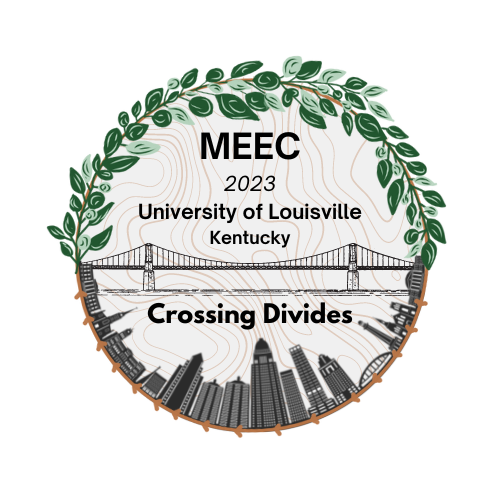Submission Type
Oral Presentation
Abstract
Colonization by fungal endophytes have broad benefits for plants, including increased resistance against herbivores and pathogens. Endophytes in culture have been shown to produce secondary metabolites that can suppress herbivore and pathogen damage. It is unknown if these toxins are also synthesized during symbiosis within the host plant, or if endophytes stimulate plant chemical responses, thus affecting plant interactions with their enemies. We tested how endophyte colonization alters the production of defensive compounds in the toxic plant white snakeroot (Ageratina altissima), a native Kentucky wildflower. We inoculated endophyte-free seedlings with one of three treatments: 1) inoculation by a single, dominant endophyte (Colletotrichum sp.), 2) inoculation with rainwater captured underneath wild snakeroot plants as a natural fungal spore source, or 3) application of sterile water as a control. After endophyte communities established in seedlings, we quantified colonization success using a culture-based approach, coupled with Sanger sequencing. Plants inoculated with rainwater had the most diverse endophyte communities. To determine if endophyte community composition and diversity affected plant chemistry, we extracted phenolics from leaf tissue and performed liquid chromatography-mass spectrometry. Comparing the phenolic profiles across the three treatments revealed microbial colonizers alter the production of secondary metabolites in plants. Plants treated with Colletotrichum sp. and rainwater had a significantly larger breadth of chemical compounds in their tissues than uninoculated seedlings. Additionally, abundance of individual phenolic compounds varied between treatments. Future work will examine if these chemicals were produced by endophytes or were produced by plant pathways triggered by fungal colonization.
Foliar Endophytic Fungi Alter Plant Host Chemistry
Colonization by fungal endophytes have broad benefits for plants, including increased resistance against herbivores and pathogens. Endophytes in culture have been shown to produce secondary metabolites that can suppress herbivore and pathogen damage. It is unknown if these toxins are also synthesized during symbiosis within the host plant, or if endophytes stimulate plant chemical responses, thus affecting plant interactions with their enemies. We tested how endophyte colonization alters the production of defensive compounds in the toxic plant white snakeroot (Ageratina altissima), a native Kentucky wildflower. We inoculated endophyte-free seedlings with one of three treatments: 1) inoculation by a single, dominant endophyte (Colletotrichum sp.), 2) inoculation with rainwater captured underneath wild snakeroot plants as a natural fungal spore source, or 3) application of sterile water as a control. After endophyte communities established in seedlings, we quantified colonization success using a culture-based approach, coupled with Sanger sequencing. Plants inoculated with rainwater had the most diverse endophyte communities. To determine if endophyte community composition and diversity affected plant chemistry, we extracted phenolics from leaf tissue and performed liquid chromatography-mass spectrometry. Comparing the phenolic profiles across the three treatments revealed microbial colonizers alter the production of secondary metabolites in plants. Plants treated with Colletotrichum sp. and rainwater had a significantly larger breadth of chemical compounds in their tissues than uninoculated seedlings. Additionally, abundance of individual phenolic compounds varied between treatments. Future work will examine if these chemicals were produced by endophytes or were produced by plant pathways triggered by fungal colonization.



Comments
Natalie Christian; University of Louisville
Keith Clay; Tulane University